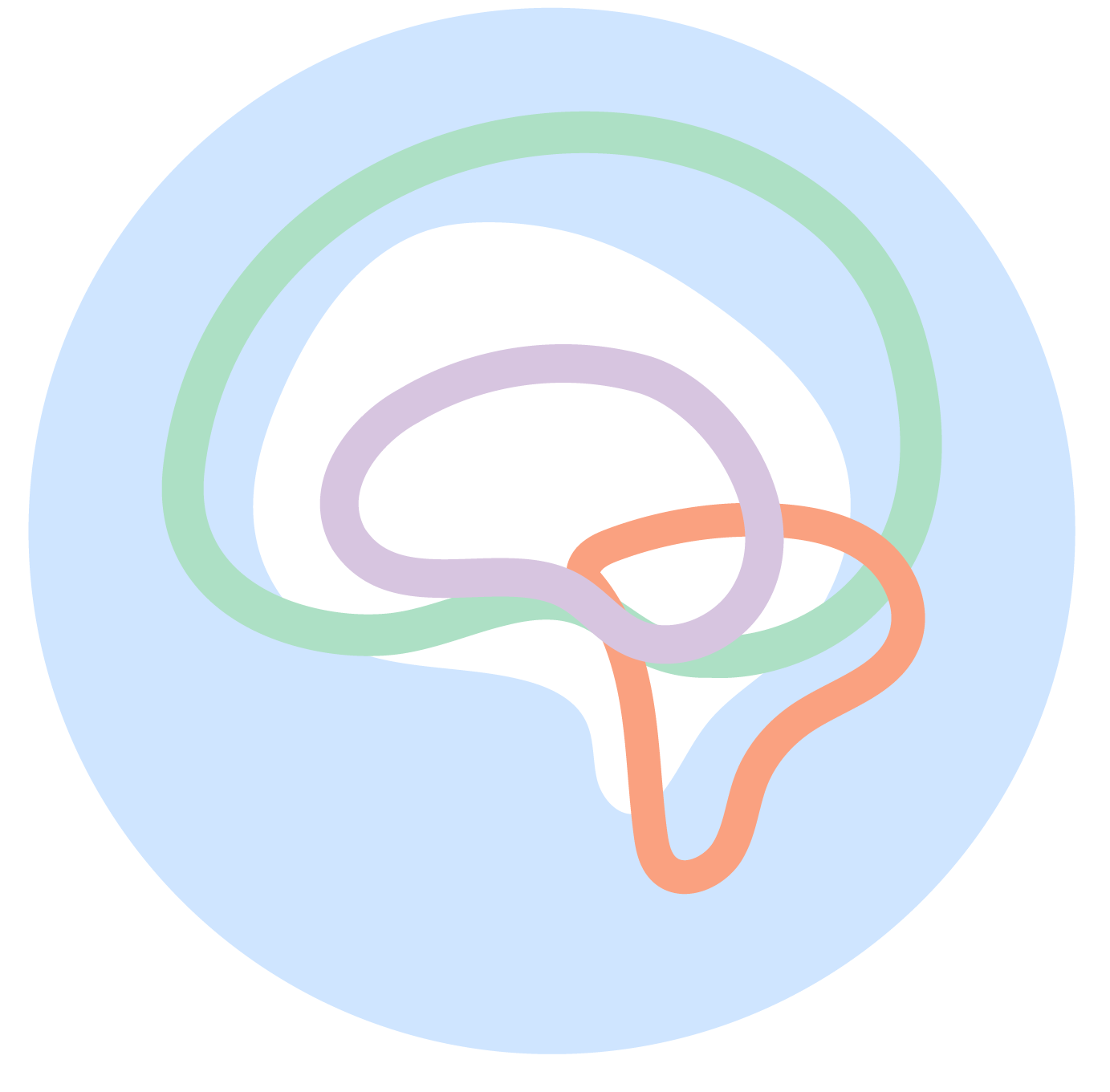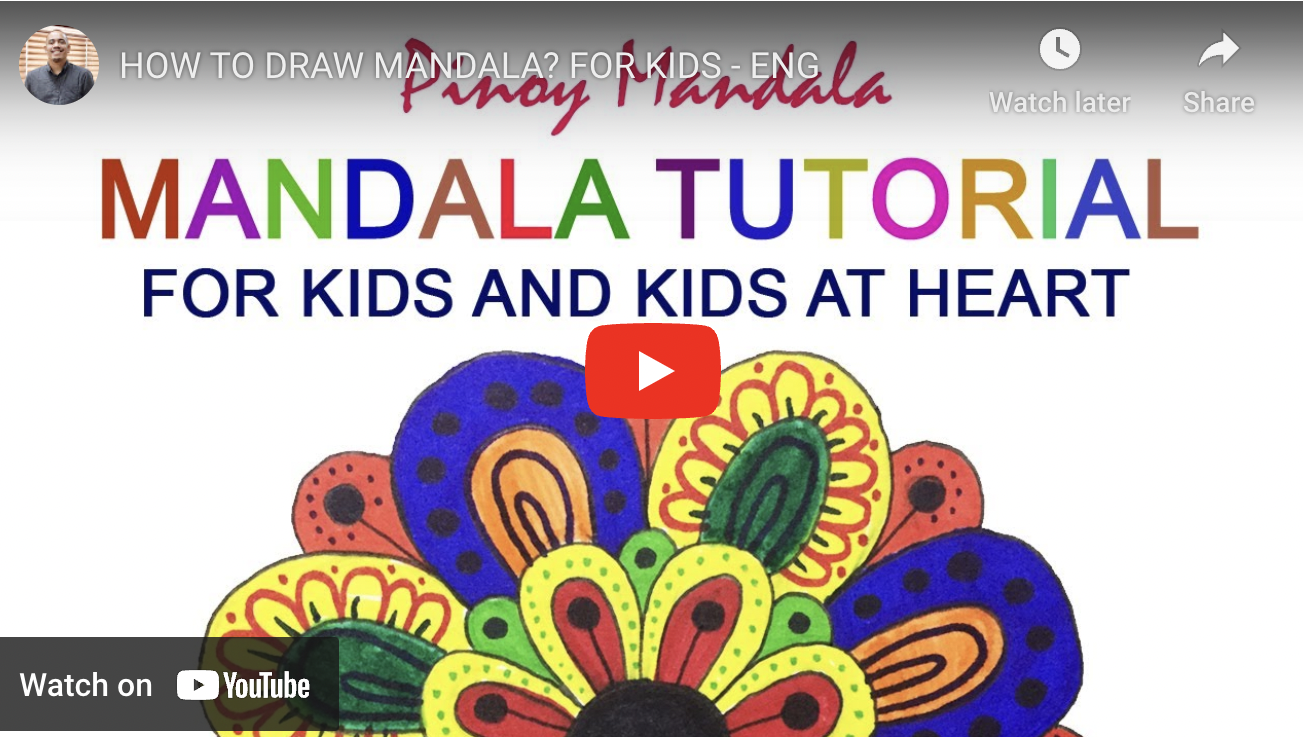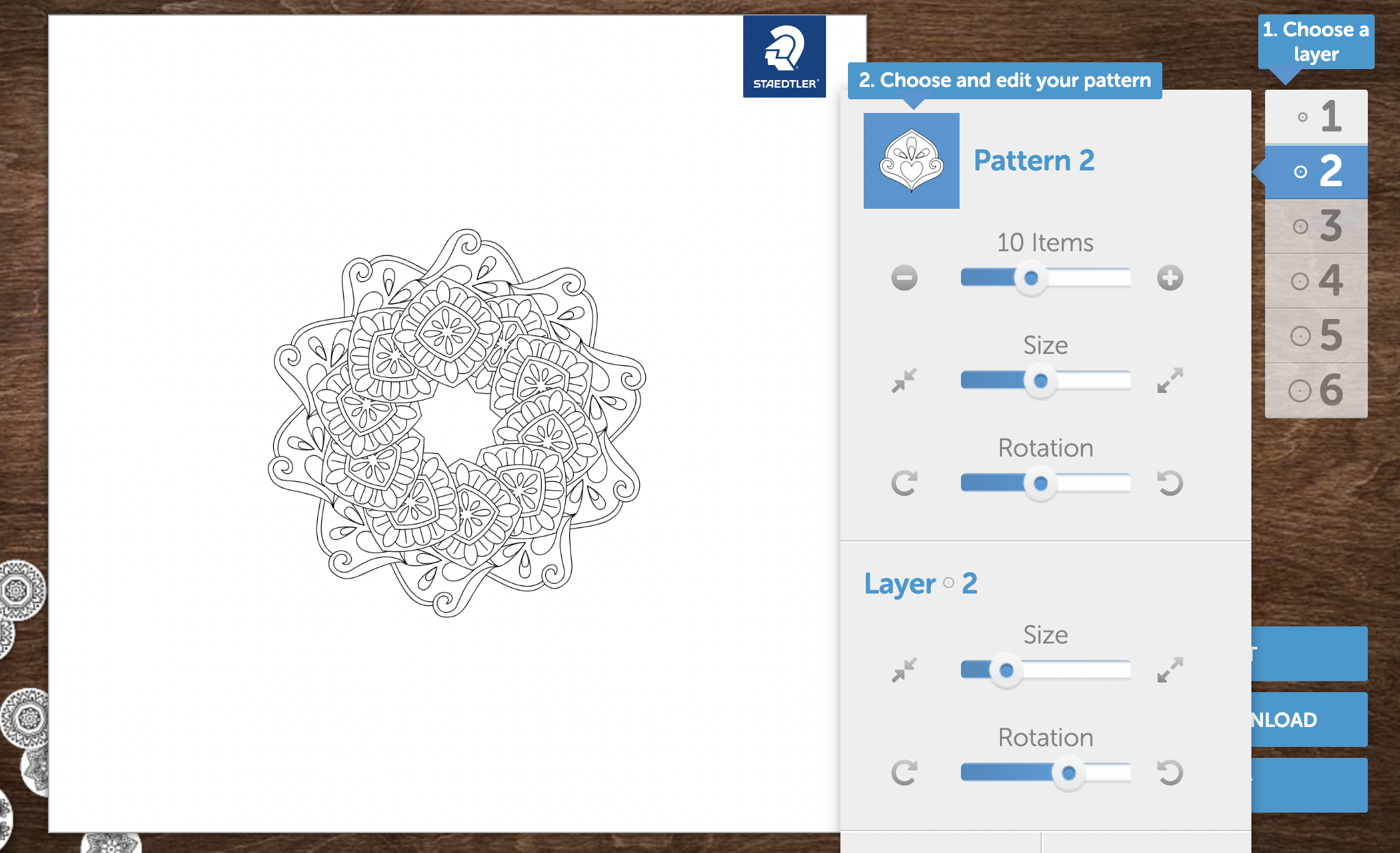Managing Stress with Art: DIY Activities
Even if the most wonderful holiday season can bring with it anxiety and stress - especially for children. Easy, low-prep art activities are a great way to manage big feelings, reduce anxiety, and alleviate stress. Check out these ideas below!
Mandalas
A mandala is an artistic representation of higher thought and deeper meaning given as a geometric symbol used in spiritual, emotional, or psychological work to focus one's attention (Mark, 2022). Sanskrit for circle, mandalas have a long history and are recognized as a tool of reflection across cultures. They represent wholeness and can be seen all around us – the rings found in tree trunks, the petals of a flower, the crystals that form a snowflake. They help us to reflect on the world within us (our bodies and minds) and the world that extends around us.
Learn more about the history and cultural meanings of mandalas.
Creating and using mandalas is both an art from and a meditation tool, and they can help to facilitate a therapeutic space for self-reflection. In fact, some studies have shown that mandalas can be effective in reducing anxiety (Mantzios & Giannou, 2018). Drawing and/or coloring mandalas can be a calming experience and serve as a great tool for managing big feelings.
Draw in the Dark
This might sound silly… but you’d be suprised how much fun you’ll have. Drawing in the dark is a simple way to let go of self-judgment and allow ourselves the space to create. In doing so, we can turn that space into a space of reflection and express thoughts, feelings, or emotions freely on our paper.
So what do you do?
You can practice drawing in the dark in a few ways:
Freehand: Turn out the lights and allow your pencil to move the way you think it should. Lines, shapes, patterns - you get to decide. Don’t worry about what it looks like or what comes next. Try to focus on the present and move your pencil in alignment with how you feel. What do swirls and zig-zags represent? What about wavy lines?
Led by music: Turn on some music and turn out the lights. Move your pencil the way the music makes you feel. Notice the difference in the style, speed, and pressure of your pencil strokes based on different sounds.
Led by a story: This requires a partner or a group! Turn out those lights and pick a friend to tell a story (making it up as they go!). You can also take turns - each sharing a sentence to build off of the last. Each time a line is shared, pause for a couple of minutes to draw what comes to mind.
When you turn the light back on, reflect on what you see. What surprised you? What made you laugh? What do you see in your doodles?
Zentangles
Zentangle is a structured drawing method, developed by Rick Robers and Maria Thomas that utilizes patterns (or tangles) of dots, lines, curves, and more. While the official method is taught by certified Zentangle instructors, the concept can be recreated with a pen and paper. Studies have followed the use of Zentangle-based interventions in schools and with adults. Kindergarteners using the method were found to have enhanced their fine motor skills, language experience, and self-confidence (Hesterman & McAuliffe, 2017), and adults using the method regularly saw reduced stress and anxiety and improved self-compassion (Chung et al., 2022).
Learn more about the Zentangle Method.
Simply put - Zentangles are created by beginning with a shape. That shape is split into sections by drawing “strings” (or curvey lines). Each section is then filled with different patterns (or tangles). There is only one rule - no erasing! Just go with the flow and see what you create.
More Activities
Art is endless creativity. You can turn your writing, drawing, sculpting, etc. into an even more relaxing activity by practicing mindfulness. Mindfulness is the practice of anchoring to the present moment, and it helps us to become more aware of how we’re feeling.
Try neurographic art. Neurographic art is a type of art that facilitates a connection between the subconscious and the conscious mind. It can be a great tool for unpacking big emotions and working towards a more balanced state. Check out this art lesson from Bethany Theile.
Create a collage. Collages are made by using different materials to make a picture that tells us a story. It can represent you, how you’re feeling, a goal or dream, etc. Get started with this activity set from Action for Healthy Kids.
Fingerpaint. Kids and adults can get a little messy with a sensory-based art activity and use their hands to create. Want to avoid the mess? Learn how to make a finger-painting sensory bag with Surrey Place.
-
Chung, S. K., Ho, F. Y. Y., & Chan, H. C. Y. (2022). The Effects of Zentangle® on Affective Well-Being Among Adults: A Pilot Randomized Controlled Trial. The American Journal of Occupational Therapy, 76(5). https://doi.org/10.5014/ajot.2022.049113
Hesterman, S., & McAuliffe, G. (2017). Introducing Zentangle in the Early Years. Curriculum and Teaching, 32(2), 61–88. https://doi.org/10.7459/ct/32.2.05
Mantzios, M., & Giannou, K. (2018). When Did Coloring Books Become Mindful? Exploring the Effectiveness of a Novel Method of Mindfulness-Guided Instructions for Coloring Books to Increase Mindfulness and Decrease Anxiety. Frontiers in Psychology, 9. https://doi.org/10.3389/fpsyg.2018.00056
Mark, J. J. (2022, September 25). Mandala. World History Encyclopedia. https://www.worldhistory.org/mandala/





